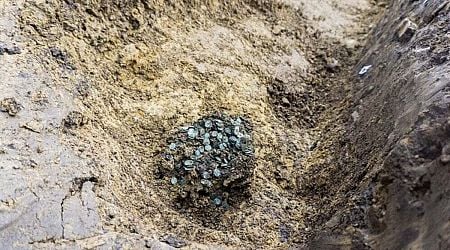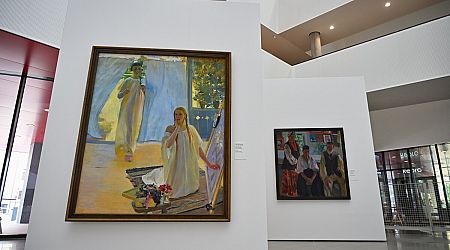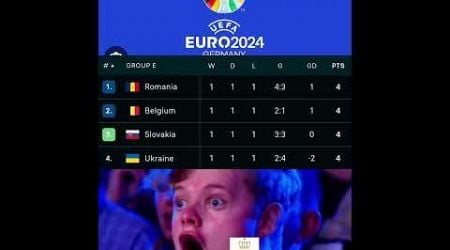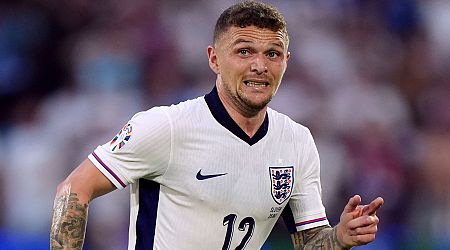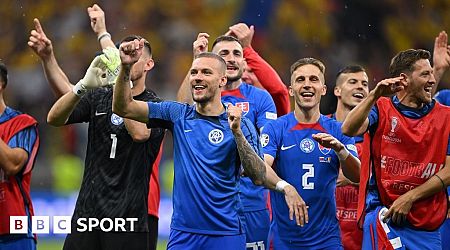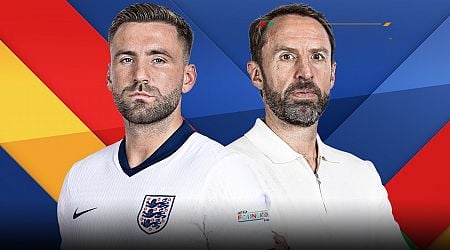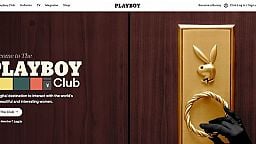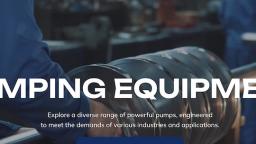Starmus festival draws top names to Bratislava, teaches Slovak students to think big
What's new in science in Slovakia?

May was a big month for science in Slovakia – Bratislava hosted an international festival with huge names from various fields discussing ways to save our planet, while the names of five scientists who won in their respective category of the Scientist of the Year award were announced.
This article is supported by the ESET Foundation, whose annual ESET Science Award recognises exceptional scientists.
In this overview, you will also find a selection of research conducted at universities and other institutions, including on bioplastics, how the town of Trenčín is becoming more energy efficient, as well as science stories that have appeared on the Slovak Spectator website.
Celebrating science
In May, Bratislava hosted an international event that combined science, art and music, bringing together big names from the scientific and creative worlds to collaborate on a single vision: our planet and how best to preserve it for the future.
The Starmus festival opened with an utterly spectacular concert by Jean Michel Jarre. Held against the backdrop of Bratislava Castle and the Most SNP bridge, drones flew over the performance which including amazing visual effects.
And that was just the beginning.
After the event, popular science Communicator Samuel 'Vedátor' Kováčik said: "I think that in 10 years’ time there will be a lot of science students who will say this was the moment that brought them to science."
He highlighted a lecture by astronaut Chris Hadfield during which a group of students hung on every word he said.
"It was a combination of science and a message to not be afraid to dream big, that things that seem unrealistic can be achieved. Let’s say there were several thousand kids there and if only every hundredth one of them decides to become a scientist, that would be enough," Kováčik said in an interview with The Slovak Spectator.
In the interview, he also talked about what it takes to understand science, how to talk to people we disagree with, and how the famous primatologist, Jane Goodall, showed the human side of science at the festival.
Find out more here.
Celebrating scientists
In late May, the 2023 Slovak Scientist of the Year winners were announced.
The award in the main category went toMartin Orendáč from the Pavol Jozef Šafárik University in Košice. He studies molecular and low-dimensional magnetism, a multidisciplinary field that combines physics, chemistry, material science and quantum technology, and is also a co-author of more than 180 papers and cooperates with renowned institutions abroad.
He and his team study molecules that display magnetic response in extreme conditions such as very low temperatures. Because these follow the laws of quantum mechanics, their magnetic properties are different to materials that we encounter in everyday life. The results can be applied to solutions for everything from cleaning waste water, to creating new cooling techniques that do not burden environment, to quantum computing, for example in writing information into a single molecule and in return creating a new type of memory.
In the Young Researcher category, the winner was Ivana Šišoláková from the Pavol Jozef Šafárik University in Košice for establishing co-operation at both international and private sector level, as well as her contribution in the field of non-enzymatic electrochemical sensors that can be used as new diagnostic methods.
Slovak University of Technology's Alexander Schrek won in the Innovator of the Year category for his research into metal forming and patenting a metal forming device. Meanwhile, Žilina University's Miloš Milčian's research and development of technological procedures for welding high-strength steel won him the top prize in the Technologist of the Year category. Thanks to results stemming from cooperation with foreign partners in AI research, Igor Farkaš of Comenius University in Bratislava took the award for Personality of International Cooperation.
Overview of other research and development activities at universities:
- Making a City: Energy efficient pathway for city transformation: enabling a positive future; Slovak University of Technology (STU); lead scientists Maroš Finka and Vladimír Ondrejčka. The Making a City project aims to make cities energy-efficient, achieving a sustainable urban environment. The goal is to employ renewable energy sources and reduce carbon footprint in order to make cities cleaner and healthier. The town of Trenčín is focusing on the transformation of selected locations into energy positive ones i.e. they create more energy than they consume. Learn more here.
- DESIGN × SCIENCE - Science Outreach by Design; STU; lead scientist Michala Lipková.Doctoral projects from STU's young designers combine scientific knowledge and design to tackle a wide range of issues, including effective use of accumulated industrial waste, cooperation with AI to benefit human creativity, use of bioplastics to clean air indoors. Learn more here.
- Effect of ionising radiation on the brain and spinal cord in an experimental animal model; Comenius University; lead scientist Soňa Bálentová. The goal is to investigate the long-term effect of ionising radiation, especially focusing on areas of the brain where new neurons are formed in adulthood. Due to progress in the development of more advanced radiation techniques, the number of patients suffering long-term consequences which worsen and limit their life is increasing.
- Activated carbon treated with different chemical agents for pertechnetate adsorption; Comenius University; lead scientist Marek Hupian.The study investigated the adsorption behaviour of different activated carbon samples under diverse conditions. Read more here.
- Pertechnetate removal from aqueous solutions by chitosan/hydroxyapatite composites; Comenius University; lead scientist Marek Hupian.Pertechnetate found in nuclear waste is harmful to the environment due to its long half-life and mobility. The presented study deals with the use of composite materials to remove it from aqueous solutions. Learn more here.
- Emergence of resistant forms of TB and influence of migration from Ukraine on their transmission; Comenius University; lead scientist Matúš Dohál.According to WHO data, Ukraine is among the countries with the highest incidence of resistant forms of tuberculosis, with their treatment lasting up to 24 months and is associated with side effects and high mortality. The goal of the study was to assess how the influx of refugees influences the tuberculosis situation in Slovakia and the Czech Republic. Learn more here.
- A new type of biodegradable and compostable plastic; Slovak Academy of Sciences; lead scientist Ivan Chodák.Finding polymers that could be substitutes for petroleum-based plastics in the packaging industry is becoming more and more important. SAV chemists have found a new recipe for a biocompatible material, the basis of which is a new liquid rubber-based compatibiliser. Its properties exceed the mechanical properties of polyethylene, the most commonly-used plastic for packaging, with its price being lower compared to fossil fuels-based plastics. Learn more here.
Other Slovak science stories on Spectator.sk:
HISTORY: Thousands of Slovaks emigrated and society had not reflected on this at all, here says historian whose museum aims to change that. The museum boasts some 4,000 items that show these people’s journey.
INSECTS: The Slovenský Kras mountain range in south-eastern Slovakia is home to an animal that lives nowhere else on the planet. Because it lives in almost inaccessible areas of the karst, there is very little information available on the species. This scientist wants to change that.
PALAEONTOLOGY: In the wake of an asteroid impact 66 million years ago, it is estimated that three quarters of the earth’s plant and animal species were wiped out. A recent fossil find suggests that among those that survived the devastation was a previously unknown species of geckos.
ANIMAL BEHAVIOUR: Unless you have somehow managed to never go on the internet or social media, you will have seen videos with cats in cute costumes, in water, or eating food. But while at first glance the clips may appear to be showing cats in funny situations, they can often be anything but amusing for the animals involved, a researcher into cat behaviour says. There are tell-tale signs to look for.
SOIL: Some of history’s most important scientific breakthroughs have come about by accident. For Košice-based startup Ekolive, a similar chance discovery was the start of a whole new chapter in their business.
This article is supported by the ESET Foundation, whose annual ESET Science Award recognises exceptional scientists.
Related
Share this page
Guest Posts by Easy Branches


















